Nataliya Kamenetskaya
home
artist's work
Nataliya Kamenetskaya

curator's work
SELECTED PROJECTS
International Women's Day. Feminist Art
from Avant-Guard till Presence
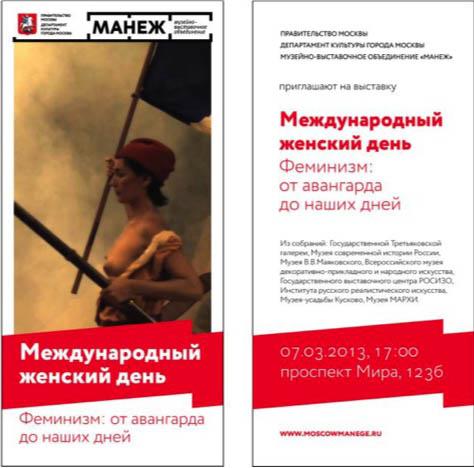
Organizer: Museum and Exhibition Association MANEZH
Venue: Museum and Exhibition Space “Worker and Collective Farm Woman” (located in the base of Vera Mukhina’s famous monument Worker and Collective Farm Woman)
Moscow, 2013
Curators: Nataliya Kamenetskaya, Olesya Turkina, Marina Loshak
The project was carried out with the support of Austrian Cultural Forum, National Center for Contemporary Art, Moscow Museum of Modern Art, Museum Association “Museum of Moscow”, Russian Federation of Artists, Polish Cultural Center, Embassy of Spain in Russia, Embassy of France in Russia, Creative Lab INO, “Irida” Association for women artists.
The feminist exhibition International Women's Day opened the festival of women's art in Moscow, dedicated to the centenary of International Women's Day in Russia, which was first celebrated in St. Petersburg in 1913.
The exhibition is designed to take a new look at key moments in the history of international feminist art in the 20th century and to unite it with the history of sociopolitical movements.
The IWD exhibition
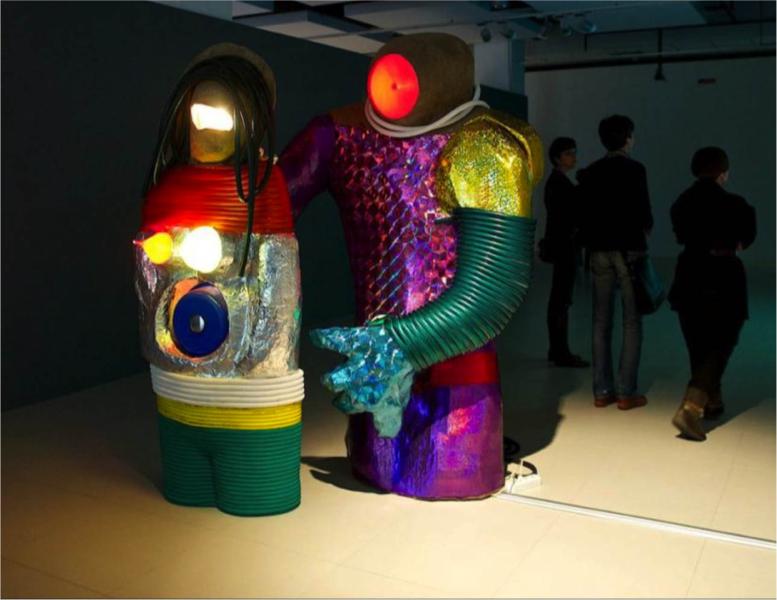
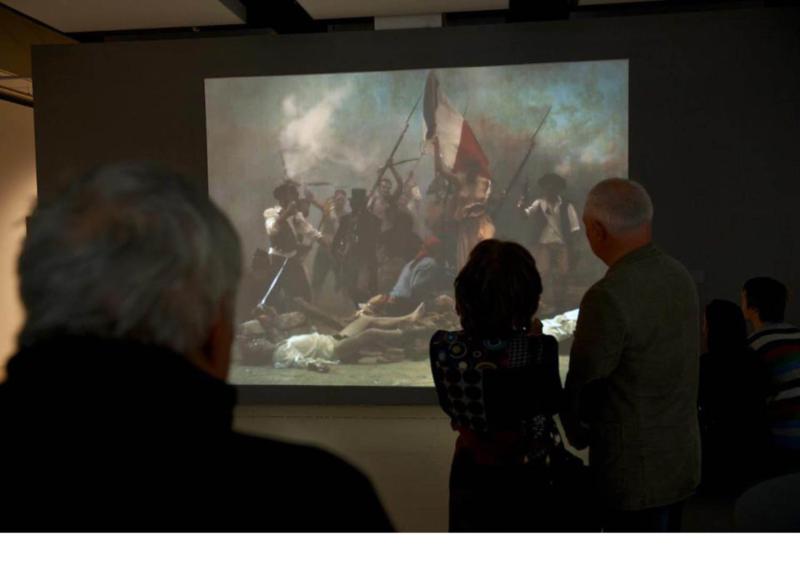
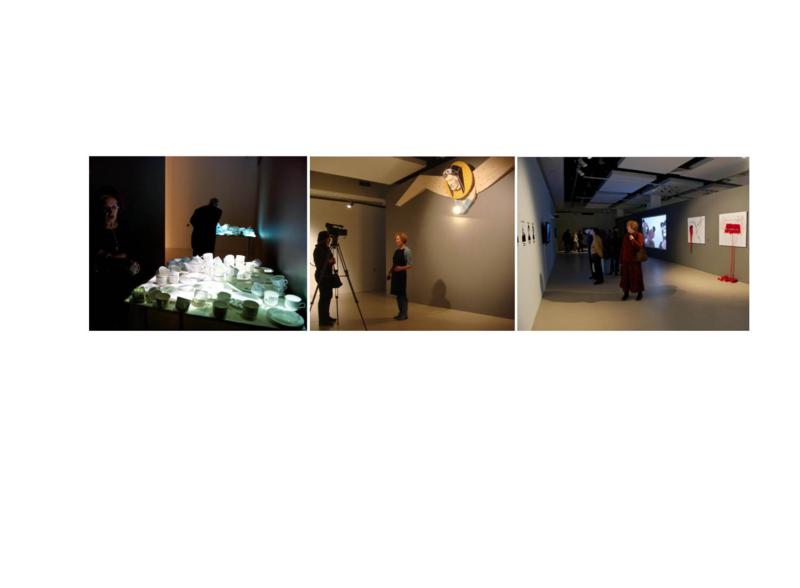
Mirages
The Interaction of Cultures in Polyethnic Space (Gender Aspects) project.
The international exhibition of contemporary women’s art Mirages/ МираЖи.
November 15~December 15 2012
Organizer: Russian State University for the Humanities
Women’s Forum – Russia
INO Creative Lab
Curator Nataliya Kamenetskaya
With the support of Russian Federation of Artists, Korean Cultural Center
E. K. Artbureau Gallery, Saule Kurpe Nova Gallery
Participating Artists: Tania Antoshina, Annouchka Brochet, Olga Chernikova, Maria Chuikova, Alexandra Dementieva, Anna Frants, Olga Fridlyand, Olga Jürgenson, Nataliya Kamenetskaya, Olga Kisseleva, Elena Kovylina, Marina Lyubaskina, Natali Mali, Alexandra Mitlyanskaya, Masha Naimushina, Anastasya Nelyubina, Maria Ovchinnikova, Janna Rybak, RD Sisters (Umit Bek, Irina Naraeva, Olesya Alekseyeva), Vera Sazhina, Saule Suleimenova, Dagmara Wyskiel, TOTART (Natalia Abalakova, Anatoly Zhigalov), Eva Zhigalova, Natasha Tsitsiashvili, Larisa Zvezdochetova, Marina Zvyagintseva, An Kyeong-Mi, Jeong Soon-Yi, Noh Jung-Suk, Sun Hyun-Ok.
In Russian, the title Mirages—Mirazhi—functions as a compound word made from the words mir (world), zhenskoe (women's) and iskusstvo (art). It calls to mind actual mirages and evokes associations of ideas.
The theme of the Mirages project is the optical (sense?) displacement and mixing of the Real, the Visible, and the Created from the perspective of the female gaze. The subject of the works will be one’s own, or someone else’s (perhaps the viewers’?), world perceived as a mirage.
The Mirages exhibition
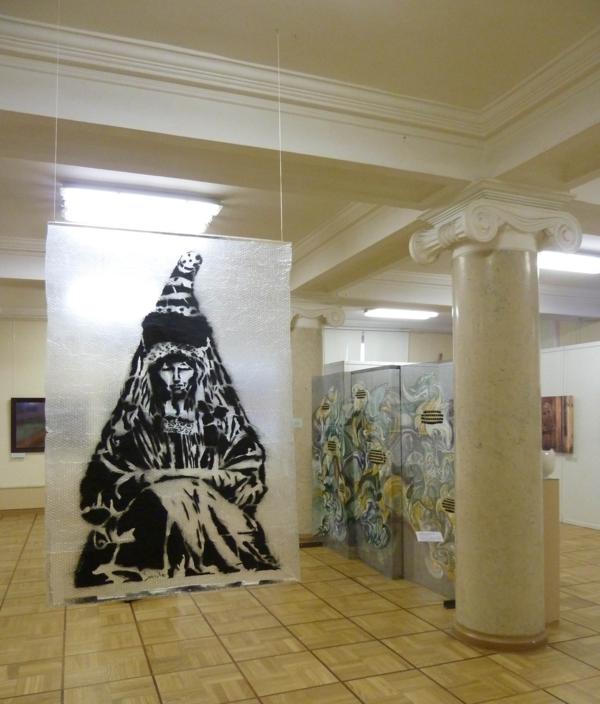
.jpg)
Women’s Nano
international exhibition presented in a special programme for the 4th Moscow Biennale of Contemporary Art. 2011
Curators: Nataliya Kamenetskaya with Annuchka Brochet & Masha Naimushina.
Venue: RGGU, RusNano, Moscow
Organizers: RGGU, INO
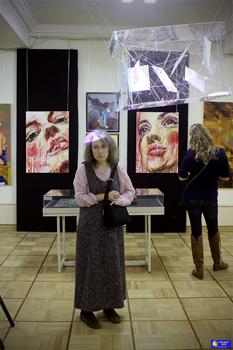
Artists: Natalya Abalakova, RDSisters, Tatyana Antoshina, Masha and Natasha Artendt, Vika Begalskaya, Annouchka Brochet, Vita Buyvid, Alexandra Dementyeva, Anna Frants, Olga Fridlyand, Olga Kisseleva, Marina Lubaskina, Natalya Kamenetskaya, Masha Naimushina, Anastasia Nelubina, Masha Ovtchinnikova, Vera Sazhina, Aidan Salakhova, Natalya Turnova, Maria Tchuykova, Olga Jürgenson, Janna Rybak, Natasha Tsitsiashvili.
«Women's nano» explores the nano-world as a phenomenon of modern culture. As any other edgy trend or new myth, it exposes the existing system of values, and the popular aspirations for the future.
Unlike the majority of science art projects «Women's Nano» did not aim at pairing artists with scientists, and at launching a whole wave of research carried out by artists, although such possibility was not excluded. The artists contemplated on the information and images of nanotechnologies which they already had obtained from media. The majority of participants of the show presented the images of their own nano-particles, and nano-universes, rather then exploring the nanotechnological research and implementations carried out by scientists.
Anthropologizing the Future
international exhibition presented in a special
programme for the 4th Moscow Biennale of Contemporary Art.
Curator: Nataliya Kamenetskay
Organizer: CCA M'ARS
Co-organizers: RSUH Museum Center, TCXP, The INO Creative Lab
Artists: RDSisters, Tatyana Antoshina, Masha and Natasha Artendt, Elena Elagina, Igor Makarevich, TOTART (Natalia Abalakova, Anatoly Zhigalov), Natalya Kamenetskaya, Marina Lubaskina, МishМash (Misha Leykin, Masha Sumnina), Marina Mozgovenko, Andrei Prigov, Ekaterina Sysoeva, Oleg Tyrkin, Masha Naimushina, Anastasia Nelubina, Masha Ovtchinnikova, Vera Sazhina, Aidan Salakhova, Natalia Turnova, Maria Chuykova, Marina Chernikova, Olga Jürgenson, Natasha Tsitsiashvili

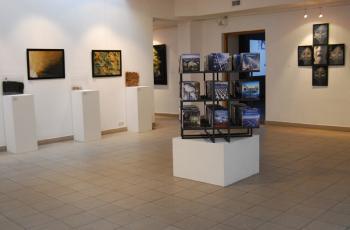
Scientific discoveries, technological progress, and shifts in political and ethical visions alter human consciousness and lives. Wars of large scale on the ground and in virtual reality, overexposed private lives, implanted microchips, accelerated particles, and frozen embryos all provoke us to think of great changes, and that future has arrived.
This art exhibition is dedicated to contemplation of the future, formatted by artists through the language of art. Participants explore such themes as environmental changes, human nature, consequences of scientific progress, human activity, or noninterference. Most of participating artists create their own parallel sciences – an approach which the artist Andrey Prigov called ‘scientific autism’.
ZEN d’ART. The Gender History of Art in the Post-Soviet Space: 1989~2009,
Moscow Museum of Modern Art, Moscow.
co-curator with Oxana Sarkisyan.Under the auspices of this project: round-tables discussion and scientific seminars.
Participating artists: Natalia Abalakova, Semen Agroskin, Anna Alchuk, Tatiana Antoshina, Anna Brochet, Vita Buivid, Olga Chernysheva, Maria Chuikova, Alexandra Dementieva, Olga Florenskaya, ‘The Fourth Height’ (Katia Kameneva, Galina Smirnskaya, Dina Kim), FNO, Ilona Gansovskaya, Glyuklya and Tsaplya (Natalia Pershina-Yakimanskaya, Olga Yegorova), Lyudmila Gorlova, Tatiana Kaganova, Tatiana Natalia Kamenetskaya, Tatiana Khengstler, Vera Khlebnikova, Marina Koldobskaya, Maria Konstantinova, Nina Kotyol, Elena Kovylina, Tatiana Liberman, Marina Lyubaskina, Natalia Mali, Alena Martynova, Bella Matveeva, Marilyn Monroe (Vladislav Mamyshev-Monroe), Liza Morozova, Marina Mozgovenko, Tatiana Nazarenko, Irina Nakhova, Anastasia Nelyubina, Marina Obukhova, Maria Ovchinnikova, Marina Perchikhina, Tatiana Petrova, Larisa Rezun-Zvezdochetova, Boryana Rossa, Aidan Salakhova, Victoria Samoilova, Oksana Sarkisyan, Vera Sazhina, Alena Shakhovskaya, Tatiana Spasolomskaya, Olga Tobreluts, Natalia Turnova, Irina Valdron, Svetlana Vikkers, German Vinogradov, VMS (Anna Abazieva, Elena Kovylina), Elena Yelagina, Anatoly Zhigalov, Olga Ziangirova, Olga Kisseleva.
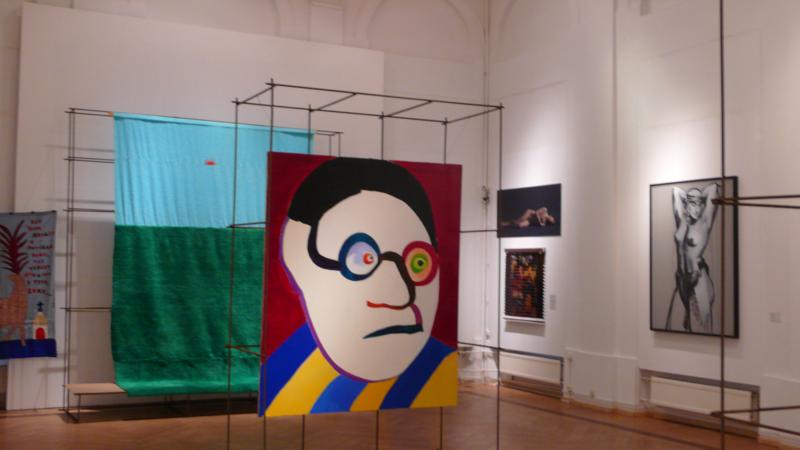
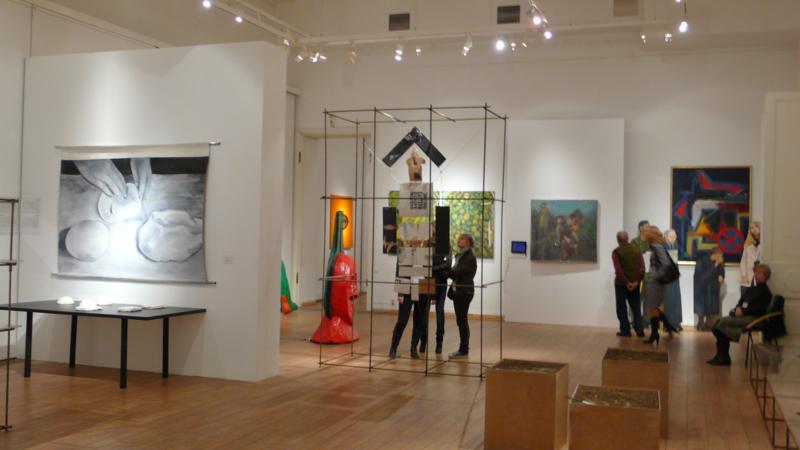
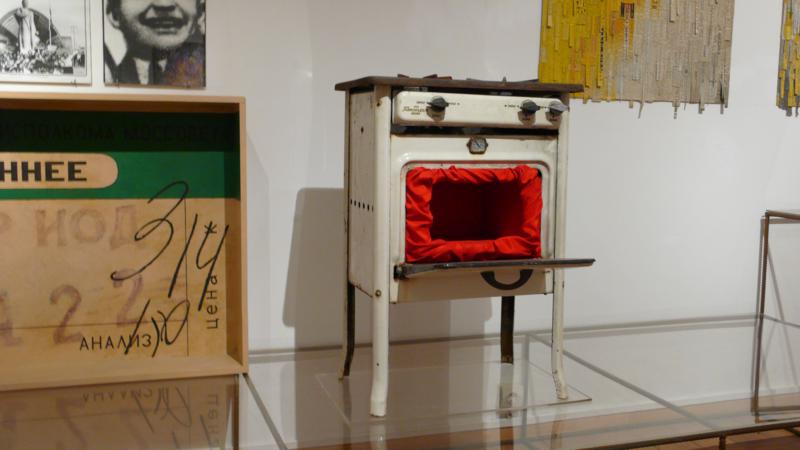
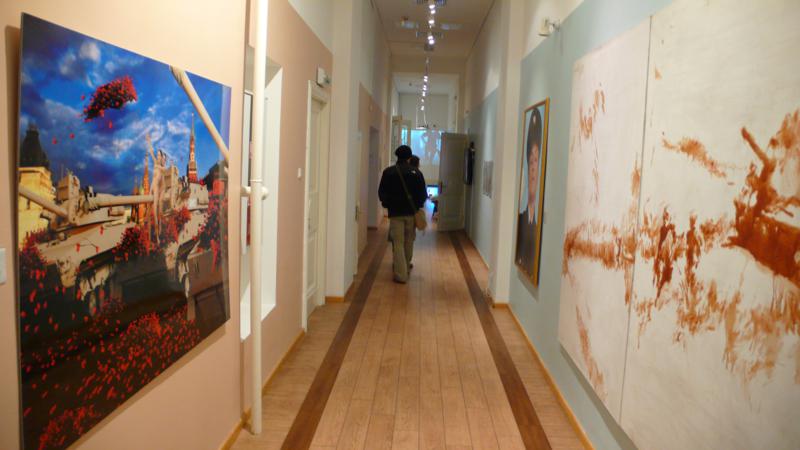
The gender discourse has become one of the most fascinating subjects in post-Soviet Russia. The words ‘gender’ and ‘feminism’ appear in our vocabulary together with ‘perestroika’, ‘democracy’, and ‘pluralism’. The ruined Soviet state gives birth to some artistic practices that define these new features of the social space. They include radical actions that have received wide recognition and took their place in the history of art, as well as gender art, which the current exhibition presents, for the first time ever, as a whole artistic phenomenon. In contemporary Russian art, the strengthening of the feminine stand and the problem of gender interaction are linked to the specifics of the post-Soviet context. The Soviet policy that proclaimed equal rights for men and women led to an androgynous leveling of gender distinctions in the society. However, this held no contradiction to the ideological presentation of femininity understood as maternal function, above all. These specifics of the national context defined the traits of language, strategies and topical problems of Russian gender art of the 90s. Olesya Turkina and Viktor Masin indicate its leading role in the psychoanalytical terminology of the day: «First, the feminine position is transitive in terms of resistance to classification and bureaucratic stabilization of the dominant signifying phallus. Second, the feminine position, being hysterical, is the position of questioning — not only herself and her private space, but also the dominant discourse: what do You want from me? This very question about the wishes of the Other turns into another question about who we are.»
Vulnerability
A special project for the Third Moscow Biennale of Contemporary Art
Organizers: RSUH Museum Center, INO In collaboration with MMOMA
Curator: N. Kamenetskaya, co-curator M. Ovchinnikova
Artists: N. Abalakova, T. Antoshina, A. Alchuk, M. Arendt, L. Block, A. Brochet, V. Buivid, M. Chernikova, M. Chuikova, A. Demenetieva, E. Golitzyna, N. Kamenetskaya, E. Kovylina, N. Kushnareva, M. Lioubaskina, N. Mali, A. Neliubina, I. Waldron,?N. Tziziashvili, A. Lunjakova, M. Naimushina, A. Salakhova, V. Sazhina, E. Sysoeva, O. Tobreluts, O. Ziangirova, E. Zhigalova.
Vulnerability is one of the more highly valued, authentic, mysterious and yet obvious characteristics that makes a human being human. Vulnerability, as opposed to degradation, is a characteristic necessary for human development and cannot be subjected to standard measures of evaluation.
The Katoptron (The gaze and the mirror), 2007
A special project for the Second Moscow Biennale of Contemporary Art
RSUH Museum Center
Curator: N. Kamenetskaya
Artists: N. Abalakova, A. Alchuk, T. Antoshina, E. Bizunova,?G. Bleikh (Izrael), A. Brochet, M. Chernikova, A. Dementeva,?E. Deicmane (Latvia), E. Elagina, B. Rossa (Bulgaria), N. Kamenetskaya, E. Kovylina, M. Konstantinova, M. Liubaskina, V. Kropivnitskaia, I. Nakhova, A. Neliubina, K.Neiburga (Latvia), A. Salakhova, M. Ovchinnikova, V. Sazhina, E. Sysoeva, O. Tobreluts, Y. Wiegers (Canada), I. Waldron, N. Turnova, M. Heiman (Israel), L. Zvezdochetova
The title, Katoptron, is taken from the ancient Greek; it is one of many names for "mirror" and at the same time means "direction of the gaze" or "reflection."?In ancient mythology the reflection of the sun's rays in a mirror was the symbol of the apparition in this world of the god Dionysus and signified the preservation of his internal unity in the endless facets of the reflection.
Homo Grandis Natu: Age. 2006
RSUH Organizers: Tallinn Art Hall, RSUH Museum Center
With the support of the Ministry of Culture of the Republic of Estonia, the Cultural Endowment of Estonia, the State Contemporary Art Center of Russia
Curators: R. Varblane (Tallinn), N. Kamenetskaya (Moscow)
Artists: A. Alchuk, T. Antoshina, L. Belozerova, A. Dementeva,?I. Jung, P. Laurits, M. Liubaskina, M. Mikhailchuk, M. Mikoff, I. Nakhova, N. Neliubina, J. Ojaver, T. Ojaver, J. Paavle, A. Parmasto, V. Sazhina, I. Sundelevich, B. Tal, E. Varik, G. Vinogradov
The project of the contemporary international art exhibition and sci-entific seminar, Homo Grandis Natu: Age, focuses on the significance of old age. Age, cultural, social and, of course, gender stereotypes of the elderly are particularly cruel. What is "old age" for the twenty-first- century person? A provocation? Inevitability? The end of life's path?
Egalitarianism
A special project for the First Moscow
Biennale of Contemporary Art. 2005
The Museum Center of the Russian State University for the Humanities Curator: Nataliya Kamenetskaya?Artists
Moscow: S.Agroskin, T.Antoshina, A.Brochet, A.Dementeva, K.Goremykin, I.Nakhova, M.Ovchinnikova, V.Sazhina, A.Salakhova, E.Sysoeva, TOTART (N.Abalakova and A.Zhigalov), N.Turnova, G.Vinogradov, I.Waldron and L.Zvezdochetova Murmansk: A.Bereza, M.Dranitsin, V.Kuzin, M.Taran, M.Vedenina St.Petersburg: Gliuklia i Tsaplia (N.Pershina-Iakimanskaia and O.Egorova), A.Florensky, O.Florenskaia, M.Liubaskina, A. Neliubina, K. Shuvalov
The exhibition Egalitarianism is contemporary Russian artists’ attempt to conceptualize the gender aspects of identity as one of?the most fundamental experiences defining historical, social and individual characteristics, as well as the fate of contemporary human beings. The idea of conceptualizing and representing the problem of gender equalit in the language of contemporary art was born in the depths of the inter-regional project Gender Aspects of the Visual Arts of Northern and Central Russia: Tradition and Innovation. ...
2002 Femme Art (Women's Painting in Russia XV-XX centuries)
INO, State Tretyakov Gallery, Moscow.
Curator of the project L.I. Iovleva Authors of the project: N. Kamenetskaya, N. Yurasovskaia Curator of the Contemporary Art section N. Kamenetskaya
Artists of the Contemporary Art section: А.Abazieva, N.Abalakova, А.Alchuk, Т.Antoshina, Е.Berezovskaia, I.Waldron, I.Gansovskaia, L.Gorlova, А.Dementieva, Е.Еlagina, L.Zvezdochiotova (Rezun), N. Kamenetskaya, E. Kovylina, М. Konstantinova, N. Kotiol,M. Kruchinina, Т.Liberman, М.Liubaskina, B. Matveeva, Е.Mukhanova, Т.Nazarenko, I.Nakhova, М.Ovchinnikova, М.Obukhova, Т.Panova, О.Sarkisyan, V.Sazhina, А.Salakhova, М.Serebriakova, О.Tobreluts, N.Turnova, О.Florenskaia, V.Khlebnikova, FNO (Gliuklia and Tsaplia–N.Pershinа-Iakimanskaia and О.Еgorova), Fourth Height (Е.Каmeneva, G.Smirnskaia, D. Kim)
Femme Art is “the other” history of Russian art... What is inspired here is the sophisticated perspective that will come with the experience of seeing works of art that are catalogued by the gender of their authors...
1999 Anamnezis Lapsus memoriae//Reminiscences, Errors of Memory, exhibit for “Women in Art” roundtable. RGGU Museum Centre, INO, Moscow
?Artists: А.Alchuk, Т.Antoshina, L. Gorlova, Е.Elagina, Т.Liberman, М.Obukhova, V. Sazhina, А.Salakhova, О.Sarkisian, О.Tobreluts, N. Turnova, М.Chuikova, V. Khlebnikova
Rememberance, reminiscence – anamnesis lapsus me- moriae (mistake of memory). Returning (recurrence), recursus (the way back) retrospicero (looking back) “Anamnesis Lapsus memoriae”
This exhibition is a natural consequence of an act of “cultural and political sabotage” accomplished by us. This act consisted of revising and auditing the mechanics of gender control that determined the degree of a subject’s visible presence and participation in art. The works of female artists who took part in the Gender Boundaries exhibition were inspired, in one way or another, by “alien” myths.
MUSEUM OF THE TIME
A time to weep, and a time to laugh; a time to mourn and a time to dance; a time to embrace and a time to refrain from embracing; ...a time to love,and a time to hate; a time of war, and a time of peace... Ecclesiastes 3, 4-8
The installation is set within the octahedron. It is a clock-face and its meaning is coincidence, movement or transformation
of inherent objects within the various instances of time. This time scheme forms a system visually close to a medieval clock. The clock-face includes: 0 – the center – a circle made of sand, a fountain and a pendulum. The visual proximity of the video – the water and the pendulum – makes the virtuality and the "reality" of the time to combine, the latter set in motion by the water and the clock. Water is a metaphor of time, a metaphor of feelings. The time starts from 0, returns to 0 and revolves around Zero. Zero is a pause and a means of the feeling estimation; 6 is a time of Love. A virtual frontal Time. It is adjoined by the counter-directed (diametrically opposed) time streams; 3 clockwise is a Museum of Woman by Tanya Antoshina. A woman is a historically developed criterion of sensuality. The clockwork becomes the Runes of Love. 3 in the opposite direction – transvestism of Time by Natalya Kamenetskaya – a changing androgyneity of Love and a chronology of name taking; 12 in the opposite direction – Time of neglect, An image of the Enemy by?Alexei Belyajev; 18 clockwise – conservation of Time, The Clock Museum by Semeon Agroskin; 13 in both directions – Time dies away (the "cuckoo-clock" with a skeleton and the "time burnt"); 7 & 9–the inner?subjects of the secret time; 22 – an empty perpendicular, exit from the installation.
Colloquium:
The Swedish-Russian Artistic Experience of Cultural Anthropology: A Gender Seminar and Performance
Exhibition: Pinocchio (in the Absence of a Nose)
Organizers: Centre for Contemporary Art, Embassy of Sweden, IdiomA
Curator: N. Kamenetskaya
Participants: А. Brag, N. Kamenertskaya, М. Ovchinnikova, V. Sazhina, А. Stark, P. Ulmanen, I. Hirdman, К. Khultman
Attended by feminists (scientists and journalists) from Sweden and women artists. The Swedish feminists selected and brought to Moscow cultural symbols that led them to feminism. They were hung together with artist’s works under the dome of the Center for Contemporary Art’s exhibition hall around a table laden with food. Sharing a feast symbolized the transfer of the traditions of chivalry to modern women.
Apocalypse
an exhibition within?the international conference
Apocalypse:
The Self-Awareness of Culture
on the Brink of the 21st Century
RGGU exhibition hall?
Curator N.Kamenetskaya,?Сo-curators: О.Ziangirova, M.Chuikova
Artists: А. Alchuk, М. Berzing, V. Brainin, А. Bugoian,?А. Viktorov, G. Vinogradov, А. Gorshkov, К. Zvezdochgiotov,?О. Ziangirovа, А. Kirakosov, N. Kamenetskaya, А. Koshkin,?N. Кrazhin, А. Lazarevich, G. Litichevsky, М. Ovchinnikovа, G. Riazanov, Т. Petrova, V. Sazhina, А. Salakhova, V. Salnikov, А. Tikhomirov, А. Fillipov, М. Chuikova, А. Shulgin, S. Shutov, V. Khlebnikova
The exhibition Apocalypse was a collection of apocalyptic motifs, subjects and ideas by contemporary Russian artists that were realized in sculptures, paintings, graphics, photographs, objects, collages and other media.?These are artistic reflections of sacred texts in the minds of the public at the end of the twentieth century, as well as the cultural conscious- ness formed by these texts over the course of twenty centuries.?What is the Apocalypse? An eternal theme, revelation, allegory, the end of time? How do artists see it? How do they imagine the end of the century, do they connect this conditional calendar marker with Revelations, or do they have revelations of their own? These and other questions were presented to exhibition’s participant
Museum of Desires. 1994–1995.
A deliberately unrealizable project for the second issue of IdiomA.
Compilers: N. Kamenetskaya, V. Mazin, O. Turkina
Article by V. Mazin
Creative projects by M. Akimova, A. Alchuk, I. Gansovskaia, E. Elagina, O. Ziangirova, M. Ovchinnikova, A. Salakhova, L. Solopova, N. Turnova, V. Khlebnikova, M. Tchuikova (Moscow); S. Osmachkina (Samara); L. Astrein, E. Gubanova, M. Zaborovskaia, M. Koldobskaia, I. Kuksenaite, B. Matveeva, M. Obukhova, O. Tobreluts, N. Turik, O. Florenskaia (Saint Petersburg).
“Museum of Desires” was a slip of the tongue by Michael Molnar, who was research director of the Freud Museum in London in 1995. The “Museum of Desires” was a project encompassing all kinds of theoretical essays based on women’s unrealized artistic projects. To date, only some of these projects have been realized in some way or another.
A state of being unrealized allows the creation to keep its status as “desire” and women’s authorship makes different levels of interpretation possible. But these women' s projects were also reflections of different cultural trends and problems, from gender self-consciousness to social demands and needs.
Femininity and Power (Ъ) exhibition. 1990
Central Club for Art Workers
Curators: N. Kamenetskaya, I. Sandomirskaya.
Designer: O. Kulik.
Artists: O. Astaieva, N. Korsakova, I. Gansovskaia, T. Spasolomskaia, L. Markelova, T. Petrova, E. Kornilova, N. Kamenetskaya, О. Chernysheva, N. Turnova
The exhibition Ъ (Femininity and Power) was the second in a series of cultural actions linked to the strengthening of women’s position in art and society and conceptualized within the category of feminist cultural analysis.
Exhibition
ZEN: Woman as Subject and Object in Аrt
March 7, 1990.
Sadovniki Gallery. Project curators: N. Kamenetskaya, I. Sandomirskaia.
Exhibition curators: Moscow section – V. Sergeev; Leningrad section (Textveiled Art from Leningrad) – О. Turkina and V. Mazin.
Moscow artists: O. Astafeva, S. Vikkers G. Vinogradov, N. Kamenetskaya, L. Markelova, Peppers (L. Skripkina & O. Petrenko), А. Salakhovа, N. Turnova
Leningrad artists, including pseudonyms: Emanuella (B. Badalov), L. Bukaeva-Taushkanova, E. Gerasimova, Pivitsa Ivanova, M. Koldobskaia, Rebecca Kreitzer (T. Novikov), Anna Krisanova, I. Kuksenaite, Nataliia Lesnik (Iu. Lesnik), Lidiia Mazina (V. Mazin) As. Magraiss (O. Kotelnikov), M. Malysheva, B. Matveeva, T. Miasnikova, Shura Nikolaeva, Masha Potapova (A. Medvedev), E. Smirnova, O. Sotnikova (Ivan Sotnikov), J. Stingray, O. Florenskaia, M. Khlobystina
The title of the exhibition is the root of the Russian word zhenshchina, “woman,” written using the metalanguage of transcription. On the one hand, the term ZËN cosmopoliticizes that favorite symbol of Russian patriotic pride, the Russian woman. On the other, it is a sort of orientalizing interpretation, expressing contempt for the Soviet ideology of femininity as a forced form of woman’s existence.
For the Leningrad variant of ZËN, the curators Olesya Turkina, an art critic, and Victor Mazin, a philosopher, put together a conceptual collection of textiles, including artifacts by Leningrad underground artists of both sexes. … All works, independent of the sex of the author, were signed with suggestive female pseudonyms, and the public was given the opportunity to attempt a sexual attribution according to the supposedly natural artistic features suggested by their own stereotypes.
Exhibition
0 Arcane
Venue: Central House of Artists, Moscow. 1992.
June 16-21. 0 Arcana
Central House of Artists
Curator N. Kamenetskaya
Artists: I. Gansovskaia, О. Ziangirova, N. Kamenetskaya, L. Markelova, H. Olshwang-Skhirtaradze, Т. Petrovа, V. Sazhina, N. Turnova, M. Chuikova